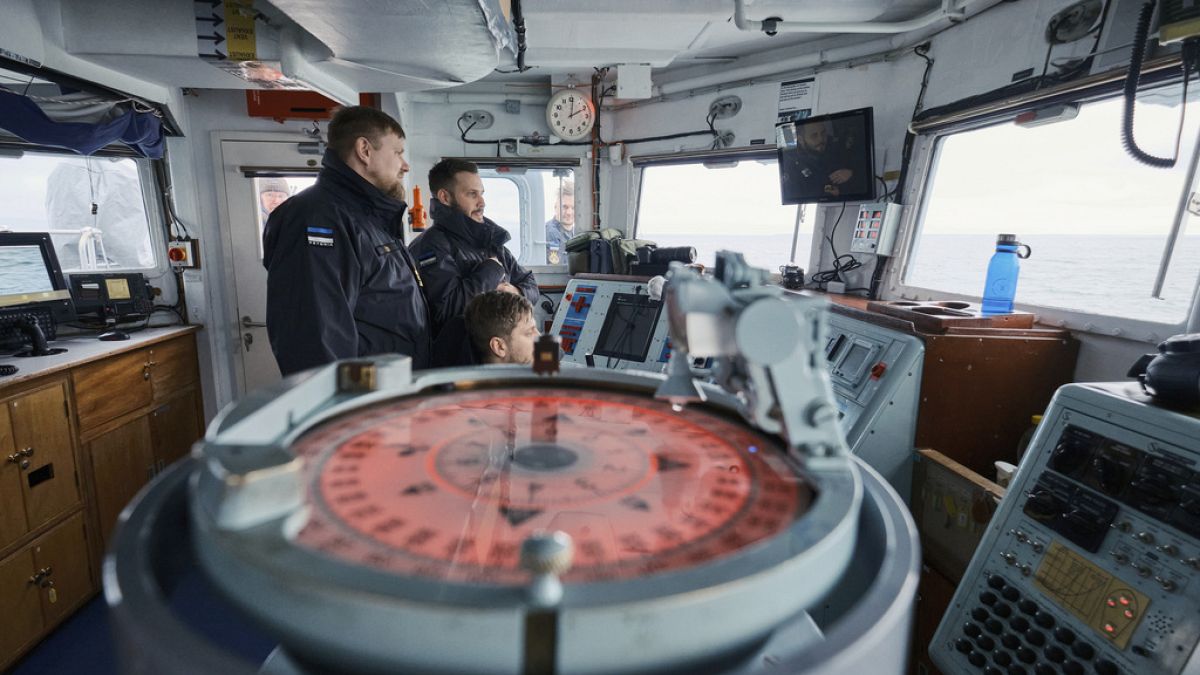Officials say the damage to Estlink 2, a power connection with the capacity to provide half of Estonia’s winter electricity needs, did not disrupt service, although it did drive up energy prices in the country and the other Baltic nations.
Naval authorities in Estonia say they have stepped up patrols in the Baltic Sea in a show of force after last month’s suspected cable sabotage.
Maritime officials say at least three Estonian navy ships are part of the patrols by NATO countries following the damage done to Estlink-2 power cable and communication links between Finland and Estonia on 25 December.
According to one of three Estonian navy ships, the Estonian minehunter EML Sakala, seamen on board the ship were keeping a careful eye using binoculars and cameras on any vessels slowing down suspiciously or suddenly changing course.
“The main thing is to show force,” Lt. Cmdr. Meelis Kants of the Estonian navy told The Associated Press aboard the Sakala.
The crew plied the grey, icy waters of the Baltic Sea west of Russia on Thursday, logging the names of ships and scouring them for missing anchors or trailing cables.
The Sakala alone has approached about 200 vessels in a week at sea. “The Baltic Sea is something that we need to defend. We need to be here,” Kants said.
Rise in undersea cable damage in the Baltic Sea
In December, two other underwater data cables were damaged. Suspicion immediately fell on Russia against a backdrop of allegations of sabotage from Moscow since the invasion of its 2022 full-scale invasion of Ukraine. However, the Kremlin denied involvement in damaging the infrastructure.
Naval authorities in Estonia say the damage to Estlink 2, which has the capacity to provide half of the country’s winter electricity needs, did not disrupt service, although it did drive up domestic energy prices and in other Baltic nations—Lithuania and Latvia.
About 145 kilometres long and located at a depth of 90 metres at its deepest point, the cable passes across one of the busiest shipping lanes in Europe.
The undersea cables and pipelines that crisscross the sea link Nordic, Baltic, and central European countries, promote trade and energy security, and, in some cases, reduce dependence on Russian energy resources.
Finland’s electricity grid operator estimates that repairs could cost tens of millions of euros and may not be completed until late summer.
Around ten Baltic Sea cables have been damaged since 2023, affecting Estonia, Finland, Sweden, Germany, and Lithuania.
Ringed by NATO members, including new members Finland and Sweden, the Baltic Sea’s critical cables and pipelines remain in a shallow area that is largely open to all ships, making such infrastructure relatively easy targets and susceptible to sabotage.
There are fears authorities in Tallinn would largely have to rely on domestically produced energy at an increased cost to consumers if the remaining power cables get damaged.

